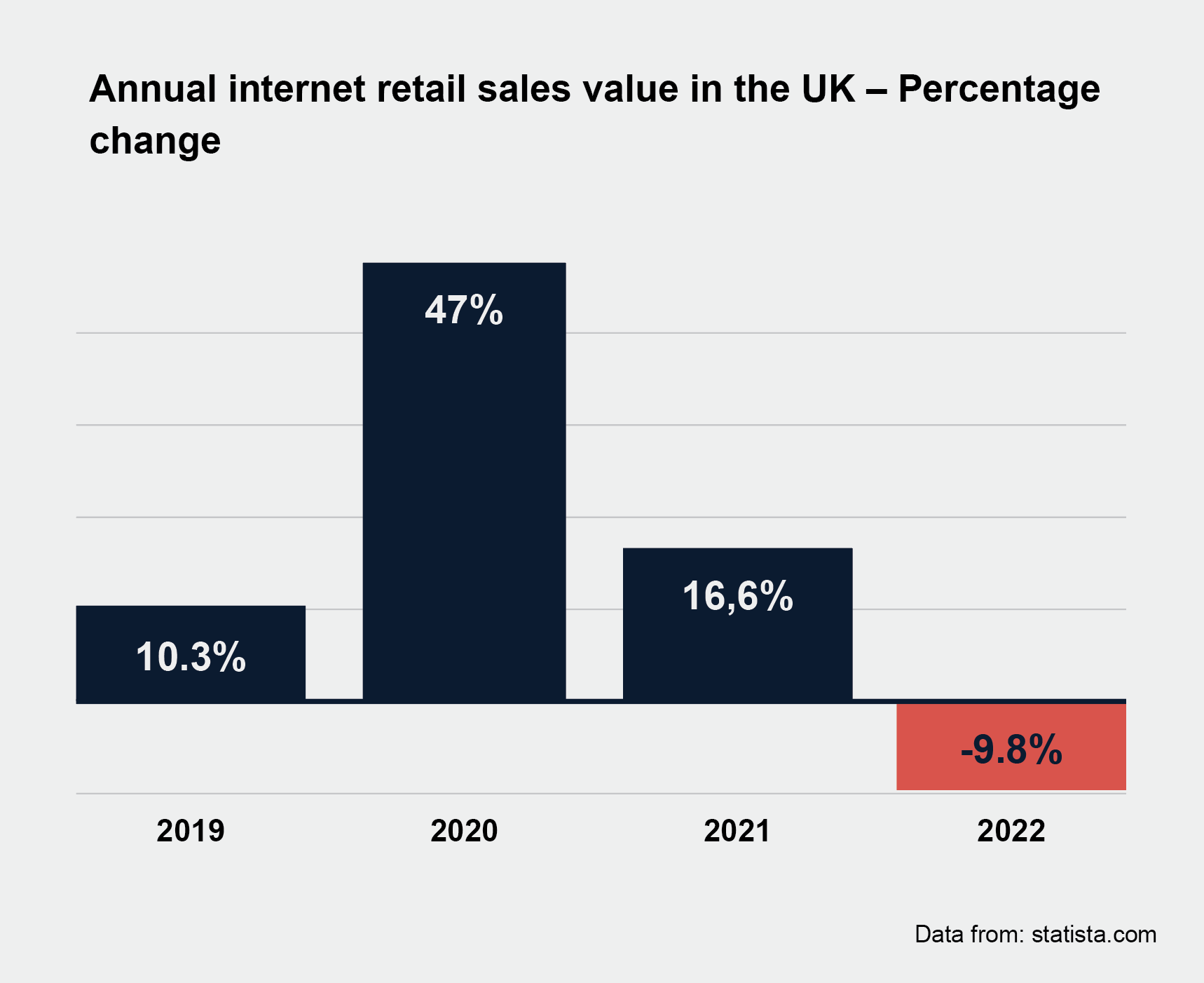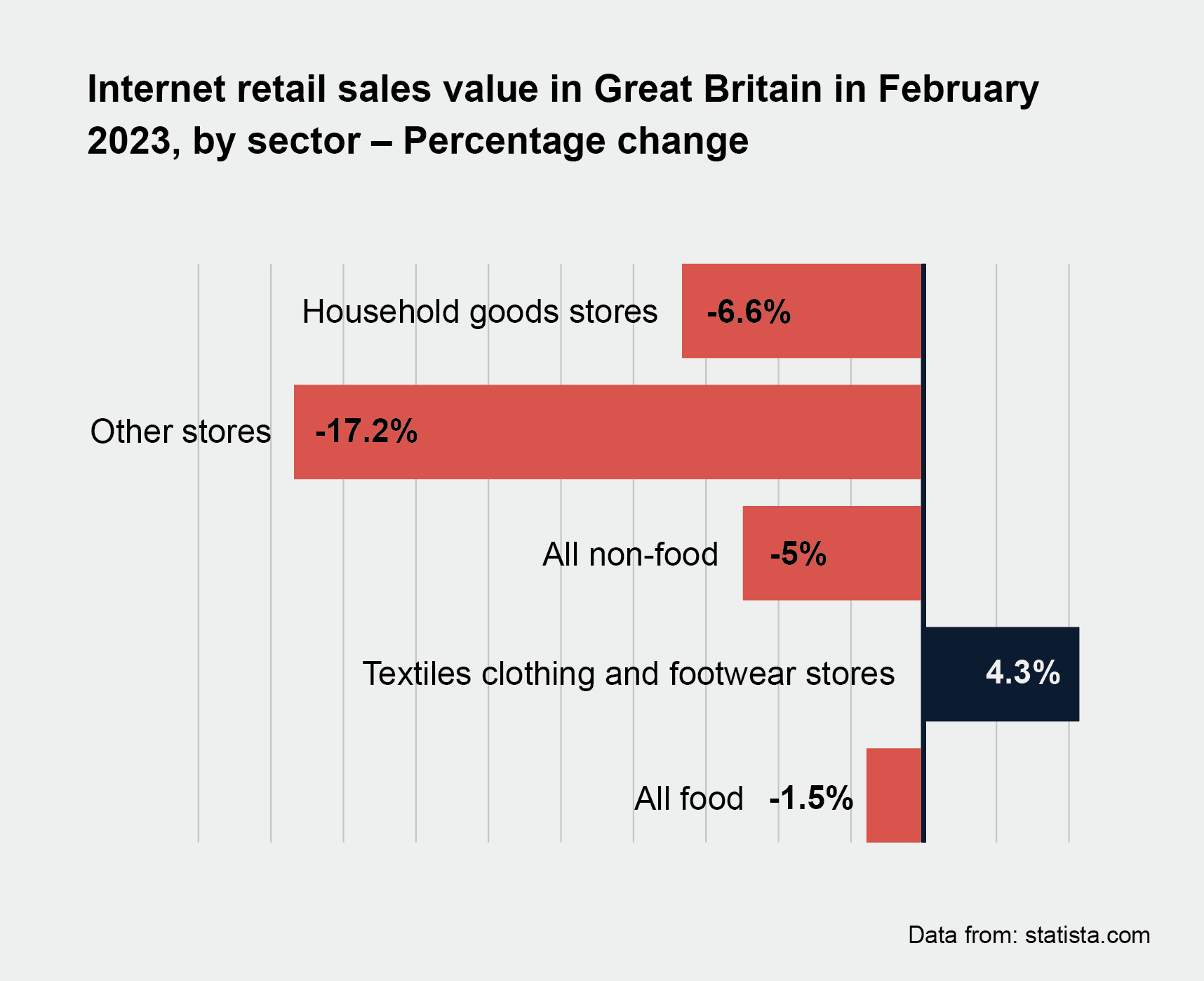Thriving in turbulent times: building a healthy e-commerce growth
April 20, 2023 / 2 min read

Photo by Bruno Martins on Unsplash
Table of contents
For the first time in 10 years, UK’s online retail market noted a 9,8% decrease in 2022, after +20% growth in the years before. As the space becomes more challenging, reviewing the healthiness of an e-commerce business is a good step towards building resilience.
The signs of e-commerce stagnation are clearly visible – the growth is slowing down, stock is becoming more difficult to liquidate, the stream of new customers seems to be drying up and the existing ones tend to visit less frequently and buy less.
Increased competition and advertising costs
Yet, since the pandemic had accelerated digital transformation in retail, significantly more players compete for the same buyer. Increased market saturation translates into higher advertising costs. And the ongoing legal regulations of privacy is not making it easier, decreasing customer targeting capabilities and in consequence swelling Cost Per Click budgets.
On top of that, customers prefer sticking to what they know and are hesitant about testing new product or business models, such as leasing or subscription.
The smart & humble approach to overcome stagnation
To overcome stagnation, it’s crucial to simultaneously strengthen the foundations of your business and focus on removing obstacles in the customer journey. But you need to approach it in a smart and humble way to reduce risk. Rather than relying on costly and risky "big bang" launches, businesses should test new ideas iteratively. This allows experimenting in a controlled environment, leading to more efficient use of resources and a greater chance of success.
Investing in customer loyalty always pays off
Effective strategy to navigate the crisis is investing in customer loyalty. Building strong relationships with customers through loyalty programs, personalized experiences, and exceptional customer service can create a sense of personal preference that encourages repeat business and positive word-of-mouth.
Conducting an e-commerce health check
But most importantly, a proper e-commerce health check is needed to understand which way to go and which areas of your e-commerce ecosystem to invest in first.
This specialist-led audit of various areas of your e-commerce ecosystem is a reliable source of insights on translating KPIs into strategy goals. It also delivers a prioritized backlog of improvements that ensure low hanging fruit to be harvested.
Typically, the areas covered by an e-commerce health check are:
- UX and user journey
- Traffic sources, share and quality
- Conversion rate-impacting elements
- AOV-impacting elements
- Retention strategies
- Safety and performance
- Accessibility of the website/app
Equipped with tools to impact the bottom line
As a result of this type of business audit, you should be equipped with a set of tools that impact the bottom line - wisely designed traffic channels, ready-to-implement strategies for increasing customer retention and order frequency that delivers increase in conversion rates and average order value.
Take action to overcome e-commerce stagnation. Watch our webinar!
If the challenges of low sales, not enough customers and overwhelming business stagnation sound familiar, we’ve prepared a dedicated e-commerce health check webinar to help you address these issues.
Don’t let your e-commerce business fall behind. Unlock your access to the webinar here. Learn how to identify root causes, focus on foundations and stay up to date with the market.
Author

Małgorzata Radkiewicz
e-Commerce Strategist
Małgorzata’s 15 years of experience have seen her delivering effective solutions to ecommerce brands of all shapes and sizes across the EU and UK. Małgorzata is experienced in brand positioning, traffic and ecommerce sales analytics and leading ecommerce teams and projects for B2B and D2C businesses.
Related articles
![A well-crafted prompt doesn’t just work once. It works across teams, channels, and campaigns. It can be tweaked for new use cases and refined based on what performs best.]()
June 27, 2025 / 4 min read
Prompts are marketing assets: how to reuse, and scale them
Prompts aren’t throwaway lines. They’re repeatable, scalable assets that can streamline your marketing your team’s output. Learn how to build a prompt library that delivers.
![Woman using a wheelchair in the office settings]()
June 17, 2025 / 5 min read
What is accessibility and why it matters?
Accessibility ensures everyone — including those with disabilities or limitations — can read, navigate, and engage with your content equally.




